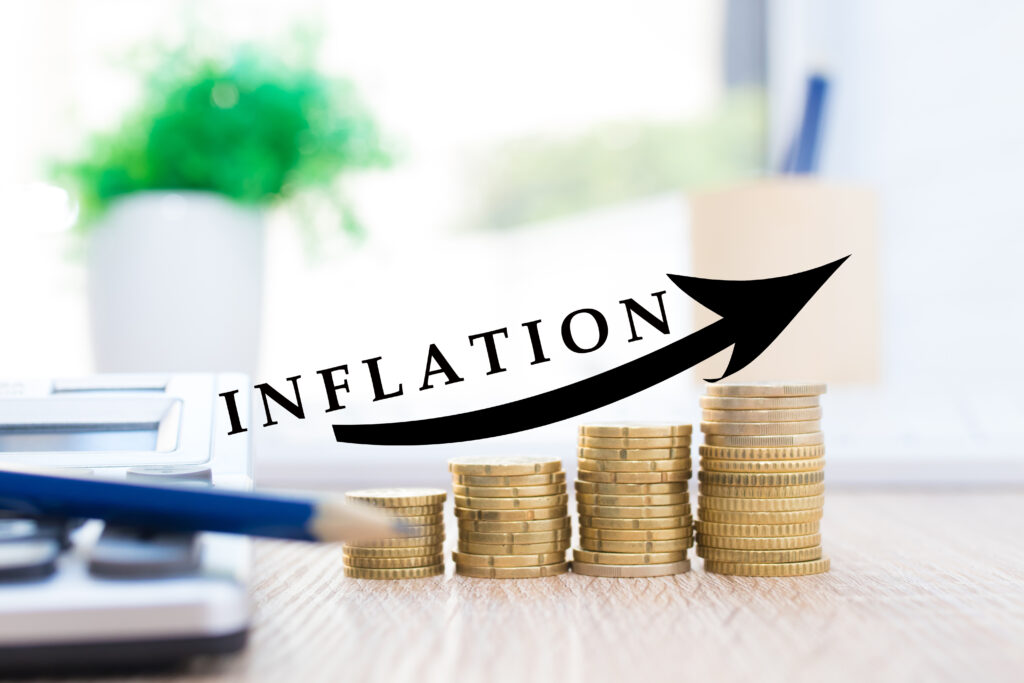What is it all about?
April 11, 2024
Two key inflation reports were released for March this week – the Consumer Price Index (CPI) and the Producer Price Index (PPI). Let’s look at these reports and then discuss a question that may be on your mind – why is the market reacting so much to these data points?

The CPI for March 2024 came in higher than anticipated, rising 0.36% month over month, versus the anticipated 0.30%. While many (including us) were of the mind that this would be the first “clean” monthly read this year (as January and February typically include some seasonal anomalies) and could show a downward trend due to that fact, that did not materialize. As was the case in prior months, a large portion of the increase came from services, namely auto insurance which rose 0.85% month over month (and 22.2% year over year).
Then came the next inflation report of the week – PPI. This measure of inflation, focused on wholesale prices, came in better than anticipated. The metric rose 0.2% for the month, below the 0.3% expected level. However, on an annual basis, PPI was up 2.1%, the largest gain since April 2023.
There have been many articles written this week on both of these reports. There are countless ways you can look at this data and many items you can exclude to prove inflation is actually falling. But not matter how you analyze it, these reports are among the top data points that markets have to assess the trendlines of inflation and they both show some signs that it is “sticky.”
Instead of dissecting the reports, I thought it would perhaps be more useful to revisit why these inflation reports are proving so consequential for markets month after month and leading to meaningful moves in both directions.
Look at the CPI report as an example – post the announcements, markets reacted terribly. Equities sold off approximately 1%, bond yields rose (causing bond prices to fall), and the dollar rallied higher. After the PPI report, equities recovered some of their lost ground (especially growth focused names) and rates were only modestly changed.
Why are markets reacting to these reports? This all comes back to interest rates. As Warren Buffet has said, “interest rates are to asset prices as gravity was to the apple.” Interest rates cannot be de-linked from the price of assets (stocks and bonds) and these inflation reports will have an impact on the path of rates in the coming months/years.
The Federal Reserve, in an effort to slow economic growth and inflationary pressure in the post COVID era, ramped up interest rates. The (very high level) idea behind this monetary policy action is that higher interest rates will make it harder and more expensive to borrow money (and also make it more attractive to save), thereby slowing spending and hopefully curbing inflation.
The Federal Reserve plans for these rate increases to be temporary. They do not want to leave rates at elevated levels for too long as that can cause challenges in the job market (which, along with stable prices, is their dual mandate). Once they see inflation stabilizing and are confident job growth remains on track, they can remove some of their emergency measures and bring rates back to a normalized level (ie: rate cuts). It’s all just a matter of time.
When will that time come? That is the question! At the start of 2024, markets were expecting the Federal Reserve to start cutting rates in short order. The job market was strong and there had been rather clear evidence of falling inflation in the later part of 2023. As a result, at the outset of the year, interest rate futures were pricing in 6 rate cuts for 2024. For the three months of 2024, markets have closely watched inflation prints, read every Fed statement, and parsed every interview to determine when the cuts will come – and still, we wait for the first cut.
This week’s CPI print led markets to believe that rate cuts may not come anytime soon – and worse yet – perhaps more rate increases could be needed to get inflation under control. A belief that rates will stay “higher for longer” leads to higher interest rate expectations. Higher rates (all else equal) means lower bond prices, lower equity prices, and a stronger dollar. These were the very price actions observed on CPI release day this week.
Once PPI data came out, there was perhaps some relief that rates may in fact come down, which led to a rally in growth stocks. Why? Stock prices are the present value of future cash flows. The denominator in that equation – interest rates – which were viewed as potentially coming down due to the favorable PPI print.
I fully realize this all seems rather technical and all a bit dizzying as markets splice and dice every element of these inflation reports. For me, there is one key point to not lose sight of. The high-level reason the Federal Reserve is not yet cutting rates is due to the ongoing resiliency and strength of the US economy. Earnings remain strong. Spending remains strong. Growth remains above expectations. All while rates are at elevated levels. This is very likely a positive backdrop for the story of US financial assets. Don’t let some noise in this one chapter distract you.
Onward we go (to quarterly earnings!)

Leave a note